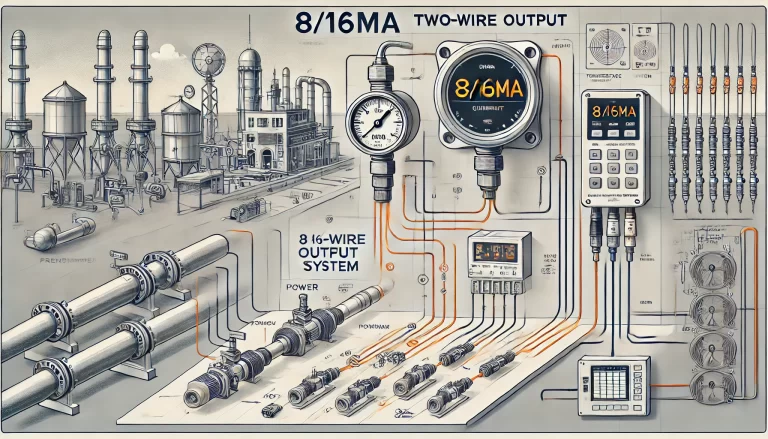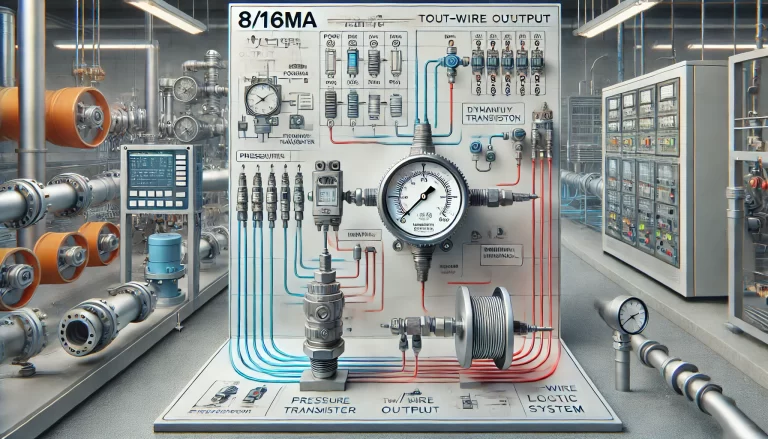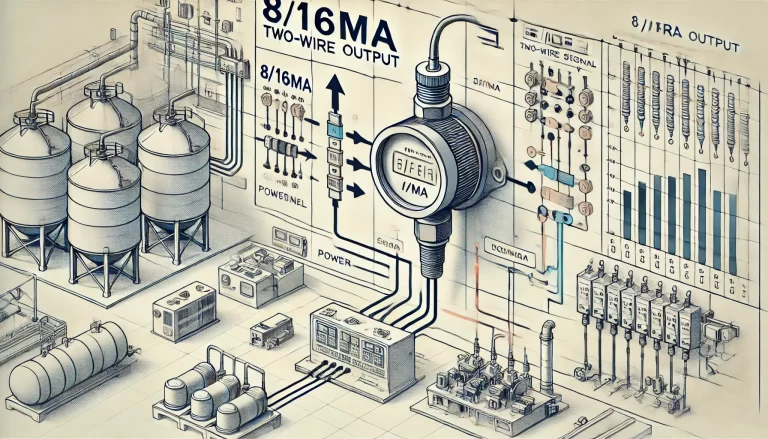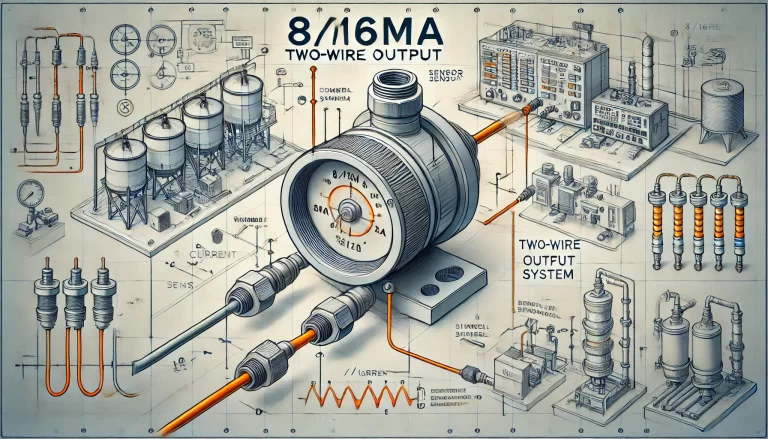The 8/16mA two-wire output system is a specific method for transmitting signals in industrial automation, commonly employed in sensors and transmitters to relay measurement data to control systems or display devices. This system is valued for its simplicity, reliability, and efficiency. Below, we’ll delve deeper into its technical aspects, working principles, advantages, applications, and distinctions from other signaling standards.
1. What is a Two-Wire Output System?
A two-wire system is a design where only two wires are used to both power the device and transmit the output signal. This dual-purpose wiring reduces complexity and cost, making it highly popular in industrial settings.
In an 8/16mA system, the signal is transmitted as a current that varies between 8mA and 16mA. This current is proportional to the physical quantity being measured, such as temperature, pressure, or flow.

2. How Does an 8/16mA Two-Wire Output Work?
The operation of an 8/16mA two-wire output can be broken down into the following key steps:
- Power Supply: The two wires supply the operating power to the device, typically from a control system or power source that provides a stable DC voltage.
- Signal Generation: The device modulates the current flowing through the circuit within the range of 8mA to 16mA, based on the measured value of the physical quantity.
- 8mA represents the lower limit of the measurement range (e.g., 0 units of pressure).
- 16mA represents the upper limit of the measurement range (e.g., maximum measurable pressure).
- Values between 8mA and 16mA correspond linearly to intermediate measurement values.
- Signal Transmission: The modulated current is transmitted along the same two wires to the receiving end, typically a controller, PLC (Programmable Logic Controller), or a monitoring device.
3. Advantages of 8/16mA Two-Wire Systems
This signaling system offers several key benefits:
Simplified Wiring:
- Only two wires are needed for both power and signal transmission, reducing the cost and effort of installation.
Noise Immunity:
- Current signals are less susceptible to voltage drop over long distances and electrical noise, ensuring reliable data transmission even in noisy industrial environments.
Energy Efficiency:
- Two-wire systems draw low power, making them suitable for hazardous areas where energy restrictions apply (e.g., intrinsically safe designs).
Compatibility:
- Many industrial controllers and measurement devices are designed to handle current signals, making integration straightforward.

4. Applications of 8/16mA Two-Wire Output
The simplicity and reliability of this system make it suitable for numerous applications:
Process Control:
- Used in industries like oil and gas, chemical processing, and food manufacturing to monitor and control variables such as temperature, pressure, or flow rate.
Instrumentation:
- Commonly found in pressure transmitters, temperature sensors, and flow meters.
Remote Monitoring:
- Ideal for applications requiring long-distance signal transmission over extended wiring, such as in pipeline monitoring.
Hazardous Areas:
- Due to the low power consumption of two-wire devices, they are well-suited for environments with explosion risks.
5. 8/16mA vs. 4-20mA Systems
The 4-20mA signaling standard is more widely recognized and used across industries. However, understanding the distinctions between 8/16mA and 4-20mA systems is crucial:
| Feature | 8/16mA System | 4-20mA System |
|---|---|---|
| Signal Range | 8mA to 16mA | 4mA to 20mA |
| Zero Reference | 8mA represents the lower limit | 4mA represents the zero value |
| Industry Standard | Used in specialized equipment | Widely accepted and standardized globally |
| Fault Detection | Limited error detection | 0mA indicates a fault condition |
| Signal Resolution | Narrower range limits precision | Wider range offers better resolution |

6. Challenges of 8/16mA Two-Wire Systems
Despite its advantages, the 8/16mA system has certain limitations:
- Limited Range:
- The narrower range (8-16mA) provides less resolution compared to 4-20mA systems.
- Compatibility Issues:
- Not as widely adopted as the 4-20mA standard, which may pose challenges in integrating with legacy systems or standardized equipment.
- Fault Detection:
- In 4-20mA systems, a signal below 4mA is often used to indicate a fault, such as a broken wire. The 8/16mA system lacks such a built-in mechanism.

7. Conclusion
The 8/16mA two-wire output system is a practical and efficient solution for many industrial applications, particularly where simplicity, noise immunity, and long-distance signal transmission are critical. While it may not be as universally standardized as the 4-20mA system, it remains an effective option for specific use cases where the narrower signal range meets operational needs.
Understanding its principles, advantages, and potential limitations enables engineers and technicians to select the right system for their applications, ensuring reliable and accurate data transmission in industrial environments.
